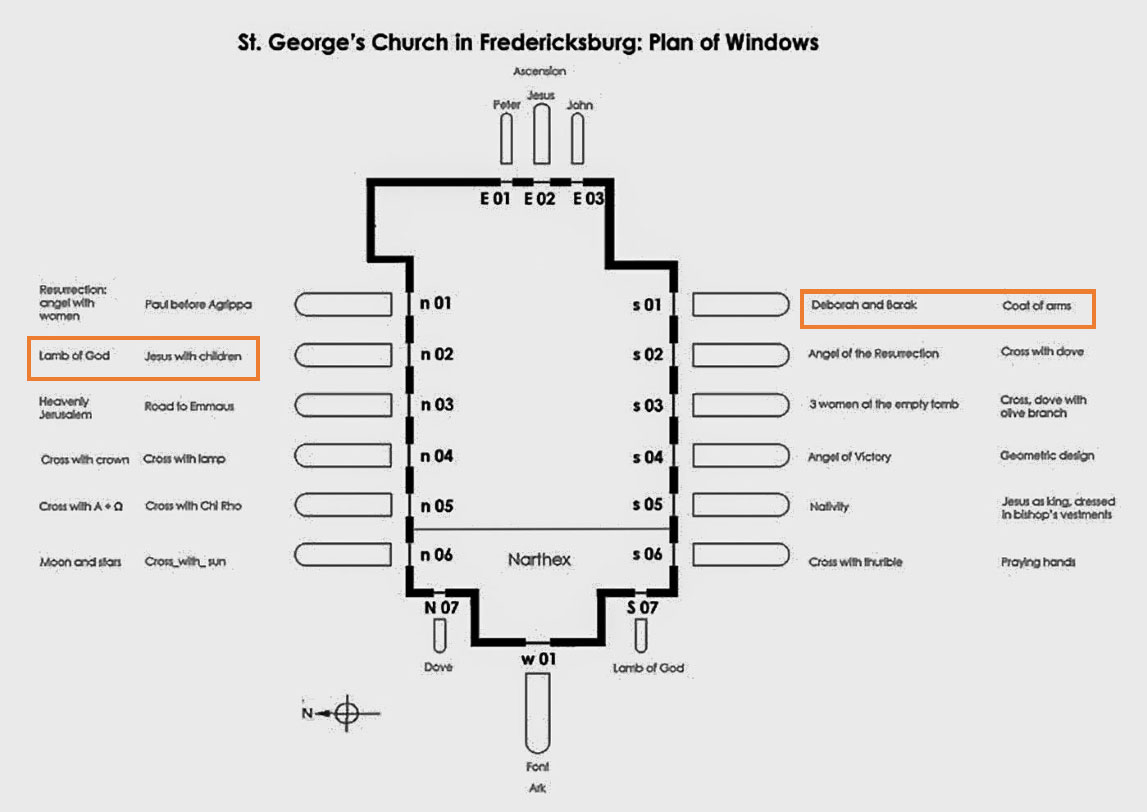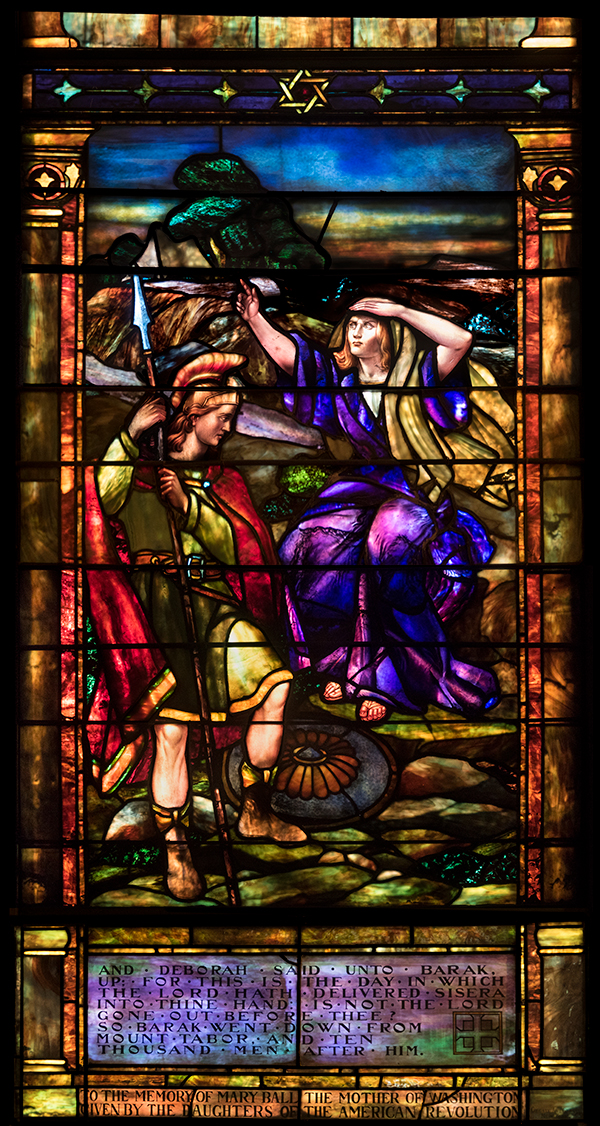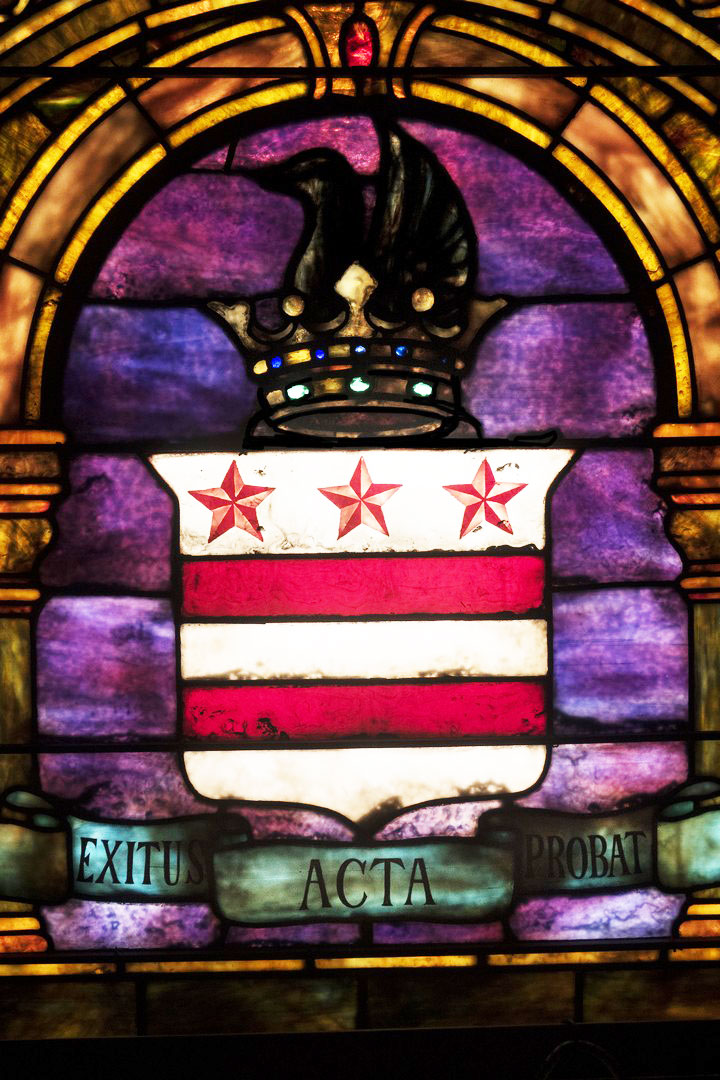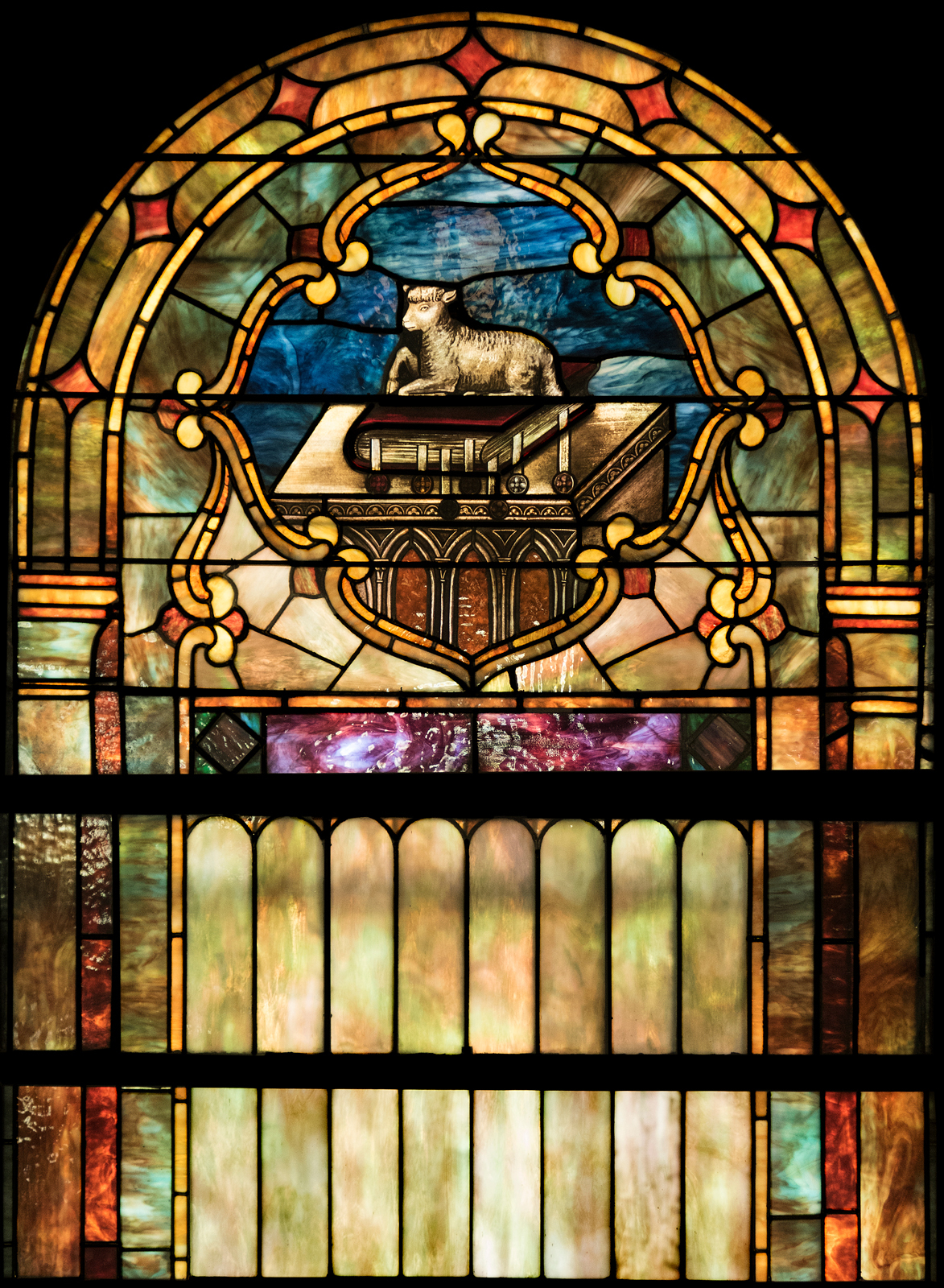
The Colgate style was created by people who had worked with Tiffany. Like Tiffany windows, these are double glazed windows. The colors are darker and often contrast with each other. There was both use of Tiffany’s colors but also used some medieval techniques with smaller pieces of glass
Henry E. Sharp had established a stained glass studio as early as 1851 in New York City and had one of his windows hanging in the Metropolitan Museum of Art. Sharp employed approximately twenty men in his 147-49 East 22nd Street studio, according to a report in Scientific America on January 9, 1869. At that time he had at least seventeen windows in preparation. He passed away in 1871
In 1875, his son William Sharp formed a partnership with a former employee Edward Colgate. From 1875-1879, the firm was known as Henry E. Sharp & Son & Colgate (also Colgate). However, by 1879, Colgate is no longer listed with Sharp in Trow’s Business Directory of New York City.
Colgate went bankrupt in 1910.
1. Deborah and Barak

Dedication: To the memory of Mary Ball Washington, Mother of George Washington, by the Daughters of the American Revolution
Inscription: “And Deborah Said Unto Barak, Up, For The Lord Hath Delivered Sisera Into Thine Hand: Is Not The Lord Gone Out Before Thee? So Barak Went Down From Mount Tabor, and Ten Thousand Men After Him”
Maker/Date: Colgate Art Glass Co., New York, 1907
Description: The window is unique at St. George’s as it is the only one with an Old Testament theme and also the only one with a female main character. The window was designed by the Colgate Art Glass Company of New York who also created Jesus and the Children on the left or north side of the Church. They were both dedicated in 1907.
The subject of the window is the defeat of Canaanites under the prophetic leadership of Deborah and the military leadership of Barak, is related in the Book of Judges prose (chapter 4) and repeated in poetry (chapter 5, which is known as the Song of Deborah). It depicts events in the 12th century BC.
Background
The people of Israel are now in the Promised Land. Slavery and their forty-year wilderness sojourn are behind them. Canaan included what today are Lebanon, Israel, Palestine, northwestern Jordan, and some western areas of Syria. It is the 12th century BC.
They are also the enemies of the native Canaanites. The Canaanites, the native people in the land, have oppressed the Israelites cruelly for twenty years under King Jabin of Canaan and his general Sisera. The Israelites are behind the Canaanites in technological innovation. They are still in the Bronze Age, while the Canaanites have advanced to the next age, the iron age, as evidenced by nine hundred iron chariots
Enter Deborah was a prophetess and the fourth, and the only female judge. Deborah prevailed upon Barak to face, the commander of Jabin’s army, in battle. The window depicts Deborah pleading with Barak to lead the Israelites against Sisera. She was known for her wisdom and ability to negotiate peace. She will ensure that her people have peace and can prosper, and so she is willing to go to war to accomplish this goal.
Barak agreed to the battle only after Deborah agreed to accompany him into battle. Deborah’s forces moved down from Kadesh in the mountains, the enemy moved north, taking the southern route up to where the battle was fought near Mt. Tabor in the North.
The Israeli force mounted 10,000 men against Sisera’s force of nine hundred iron chariots. In the battle at Mt. Tabor, a cloudburst occurred, causing the river to flood, thus limiting the maneuverability of the 900 iron Canaanite chariots. Sisera fled, seeking refuge in the tent of a Kenite woman. Jael gave Sisera a drink of milk and he fell asleep from weariness. Then she pounded a tent peg through his head. When Barak came along, she let him see Sisera dead in her tent. Later Israel slew King Jabin.
Techniques – Barak in the window appears somewhat reluctant to take up the cause, looking downward as Deborah obviously is agitated. The bright purples illuminate her main role in the window as well as the light color of her skin. She is pointing to Mt. Tabor in the background. Her expression is serious with a starring glance toward the mountainous and her hand on her head to help gain a better glance. Barak is distinguished with contrasting greens. Colgate’s colors are dark The mountainous terrain is obvious and appears as one uniform whole. The sky appears ominous with the obvious advantage of the Canaanites. The styling is medieval with many small pieces of glass.
2. Washington Coat of Arms
Dedication: To the memory of Mary Ball Washington, Mother of George Washington, by the Daughters of the American Revolution
Subject: Washington Coat of Arms
Maker/Date: Colgate Art Glass Co., New York, 1907

Description: The design of the Washington Coat of Arms (three red stars over two horizontal red bars on a white field) is often said to have inspired the Stars and Stripes flag and has been used since 1938 as the coat of arms and flag of the District of Columbia. It is also found on the Purple Heart. The shield is topped with a crown and bird. The phrase “Exitus Acta Probat” is Latin for “the result validates the deeds” or, more accurately, “the ends justify the means.”
3. Christ with the Little Children, 1908

Lower Subject: Christ with the Little Children
Inscription: “Faithful Unto Death”
Dedication: In memory of Marshall Carter Hall
Donor: St. George’s Sunday School
Maker/Date: Colgate Art Glass Co., New York, 1907
Description: There are at least 3 scriptural references with Jesus and the Children
Matthew 19:13-15;
3Then little children were brought to Jesus for him to place his hands on them and pray for them. But the disciples rebuked those who brought them.
14Jesus said, “Let the little children come to me, and do not hinder them, for the kingdom of heaven belongs to such as these.”15When he had placed his hands on them, he went on from there.
Mark 10:13-16;
13People were bringing little children to Jesus to have him touch them, but the disciples rebuked them. 14When Jesus saw this, he was indignant. He said to them, “Let the little children come to me, and do not hinder them, for the kingdom of God belongs to such as these. 15I tell you the truth, anyone who will not receive the kingdom of God like a little child will never enter it.” 16And he took the children in his arms, put his hands on them and blessed them
Luke 18:15-17
15People were also bringing babies to Jesus to have him touch them. When the disciples saw this, they rebuked them. 16But Jesus called the children to him and said, “Let the little children come to me, and do not hinder them, for the kingdom of God belongs to such as these. 17I tell you the truth, anyone who will not receive the kingdom of God like a little child will never enter it.”
The window was dedicated in October 1907 by W. L. Caldwell, a representative of the Colgate Art Glass Co came to St. Georges to dedicate the window. The window cost between $400 and $500 with the cost contributed by Sunday School. We know from a previous contractor visiting St. George’s that Colgate went bankrupt in 1910.
Daily Star wrote October 4, 1907 “It is a beautiful and appropriate tribute to his work in the Sunday School as it is to his high Christian character.”
Marshall Hall (1843-1903) was a Superintendent of Sunday Schools for 38 years and druggist at J.B. Hall Sons Druggists with his brothers Horace B. & Robert R Hall His father was John B. Hall druggist on Caroline Street and Marshall was one of 7 children. John B. Hall served in the second church and there is a portrait of him in the Fredericksburg museum. Robert Rush Hall also served St. George’s.
Marshall served Braxton’s Battery in artillery in Civil War. They are related to the famous colonial doctor Benjamin Rush of Philadelphia – a Hall married Rush’s Aunt.
One of the best quotations about him was in his obituary – “Of him, it can be truly said that he was a man of spotless, plainless character untouched by any form in vice or any sense of the word.”
4. Lamb of God, 1908

Subject: Lamb
Dedication: In memory of Marshall Carter Hall by St. George’s Sunday School
Maker/Date: Colgate Art Glass Co., New York, 1907
“Lamb of God” was a description of Jesus first used by John the Baptist. “Behold the Lamb of God, who takes away the sin of the world.” (John 1:29)
1:Peter:20 “Christ, a lamb without blemish or defect.”
1 Corinthians 5:7 Jesus is “our Passover lamb.”
Jesus is seen as the sacrificial lamb going to his death but one that has triumphed. A lamb is sacrificed at the Jewish ceremony of Passover.
In the story of Exodus, God planned to compel Pharoah to release the people of Israel from slavery by killing the firstborn of each Egyptian household. He told the people of Israel to sacrifice lambs and use their blood to mark their doorposts so that by that sign God would know to pass over their homes and not take the firstborn.
Jesus died at twilight on Passover, the time God told the Israelites that lamb should be sacrificed (John 19:4/ Exodus 12:6).
Lamb often shown in a position of triumph, standing with its leg hooked around the pole of a flag made up of a red cross on a white background and topped with another cross.
The Lamb can be shown as lamb with feet tied showing the future sacrifice.
Lamb or ram appears in Jewish writing about the apocalypse at the end of time as the agent of God who would crush evil and save God’s people. In the book of Revelation, John saw a lamb and a book with 7 seals. When the lamb opened the seals, it ushered in the final apocalypse. Thus if a lamb is near a book from which 7 seals are shown, it is a reference to this event.